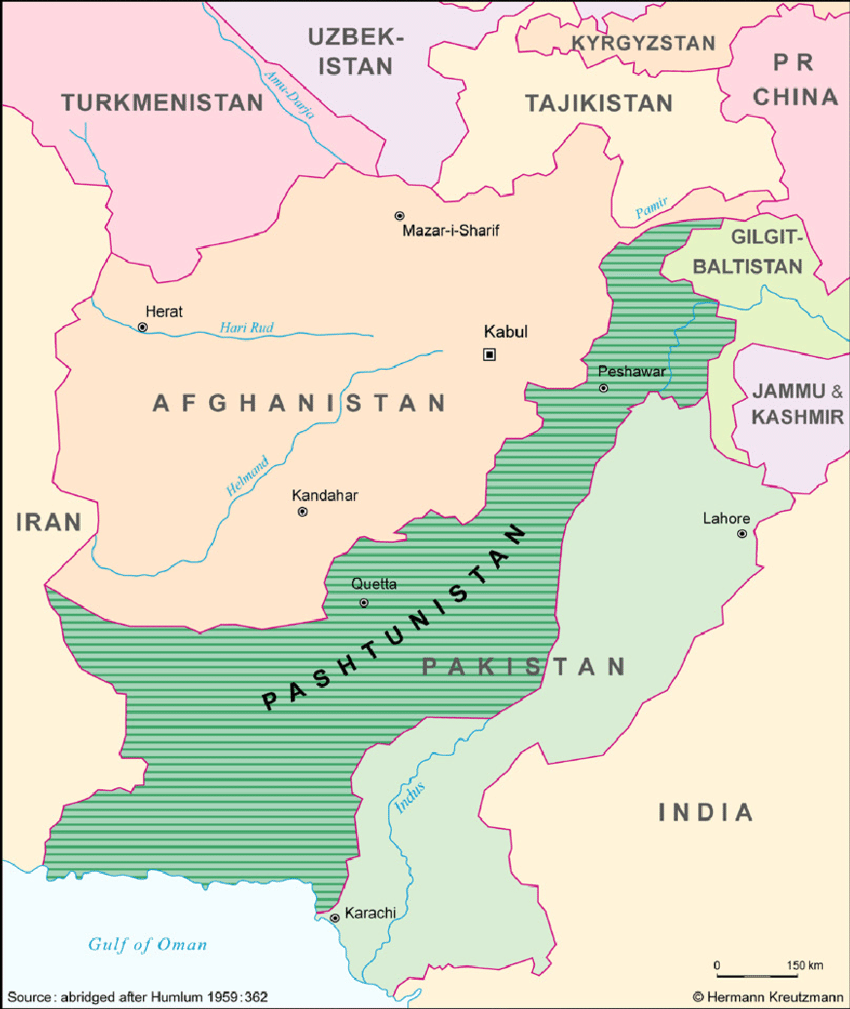
The Durand Line, a border carved across Pashtun lands in 1893, continues to be a fault line in Afghanistan-Pakistan relations. This division of a proud ethnic group with a shared history and language fuels the controversial concept of Pashtunistan: an independent state for Pashtuns. Proponents see it as a fulfillment of self-determination, but the weaponization of this idea has threatened regional stability. This article explores the historical context, motivations behind the Pashtunistan movement, and the dangers of using ethnicity as a political tool.
Pashtuns, constituting roughly 40% of Afghanistan’s population and 15-20% of Pakistan’s, are the largest ethnic group in the region. Their history boasts empires like the Durrani Empire, which stretched from Central Asia to the Indian subcontinent. Pashtunwali, their unwritten code of honor, emphasizes hospitality, revenge, and fierce tribal loyalty. This fosters a strong sense of shared identity that transcends national borders. Ethnonationalist theory provides a key lens to understand the Pashtunistan movement. It emphasizes the role of shared ethnicity, language, and culture in shaping national identity and political aspirations. Pashtunistan supporters argue for an independent state based on the idea that Pashtuns constitute a distinct nation divided by arbitrary borders. They see their cultural and linguistic unity as justification for self-determination.
The seeds of Pashtunistan were sown during British colonial rule. The Durand Line, drawn in 1893 by British diplomat Mortimer Durand, divided Pashtun territories between Afghanistan and British India. This arbitrary demarcation, created resentment and a yearning for unification. Early 20th-century figures like Haji Mirza Khan Akhund of Kharoti emerged as vocal proponents of a unified Pashtun state. The concept gained renewed traction during the Cold War. Afghanistan, under Soviet influence, embraced the idea of Pashtunistan as a way to undermine Pakistan, a key US ally. This fueled separatist movements in Pashtun-dominated areas of Pakistan, contributing to regional instability. The 1979 Soviet Invasion of Afghanistan and the subsequent emergence of the Mujahideen on political arena, with a strong Pashtun presence, further inflamed tensions.
The concept of Pashtunistan, an independent state for Pashtun people, carries significant geographical implications. A Pashtunistan encompassing territory from both countries would create a landlocked nation in a strategically important area bordering Iran, China, and Central Asia. However, it would also raise concerns about controlling vital mountain passes and potentially becoming a political flashpoint. The beneficiaries of Pashtunistan are a matter of debate. Pashtun nationalists argue it would unify their culture and identity, currently spread across borders. It could also offer greater autonomy and address grievances of marginalization felt by some Pashtuns in Pakistan. However, the repercussions for existing countries are significant. Pakistan, which holds the larger portion of the Pashtun population, vehemently opposes the idea. It views Pashtunistan as a threat to its territorial integrity and a breeding ground for instability and terrorism. Pakistan has historically invested in its Pashtun-dominated region in North-West, to quell separatist sentiments. The recent merger of FATA with Khyber Pakhtunkhwa Province aims to further integrate Pashtuns into the national fold.
The political exploitation of the idea of Pashtunistan isn’t just a theoretical threat; it has the potential to destabilize the entire region in a way that transcends national borders. A violent separatist movement fueled by the Pashtunistan ideal could very well plunge Afghanistan and Pakistan, both strategically vital and historically volatile states, into a vortex of chaos..
The specter of Pashtunistan has already been used by the Afghan Taliban, a violent proscribed group that has repeatedly provided a haven for terrorist organizations targeting Pakistan. TTA’s disregard for the security concerns of their neighbor highlights the dangers of weaponizing ethnicity. A Pashtunistan Movement fueled by grievances and backed by a state, with a history of harboring anti-Pakistan militants is likely to be a recipe for disaster. Ethnic tensions, already simmering in the region, would explode, potentially pitting Pashtuns against Baloch, Sindhis, and other ethnicities. The impact of instability in Pakistan contributes towards regional destabilization underscoring the need for a peaceful resolution, which addresses the root causes of Pashtun grievances.
